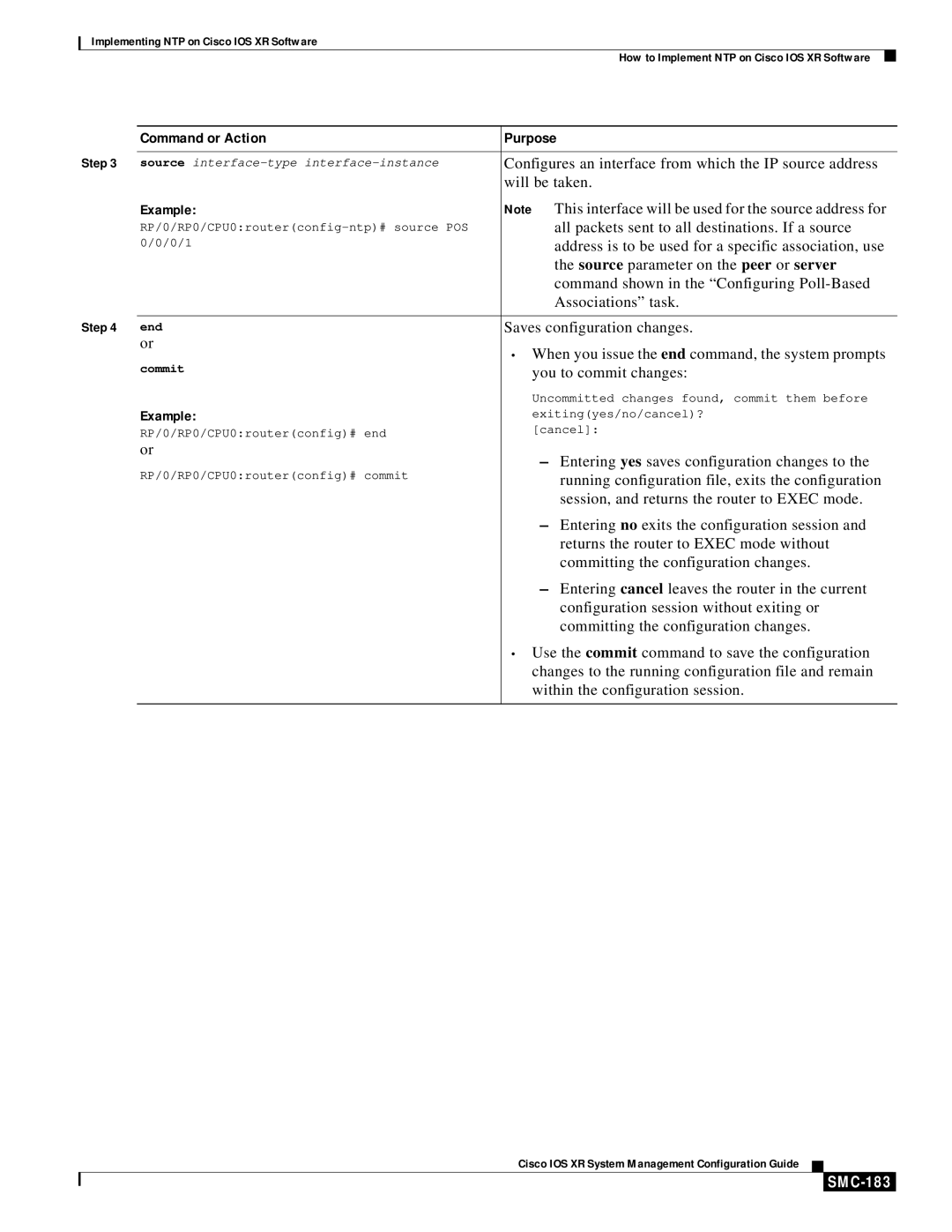
Implementing NTP on Cisco IOS XR Software
How to Implement NTP on Cisco IOS XR Software
| Command or Action | Purpose | |
Step 3 |
|
| |
source | Configures an interface from which the IP source address | ||
|
| will be taken. | |
| Example: | Note | This interface will be used for the source address for |
|
| all packets sent to all destinations. If a source | |
| 0/0/0/1 |
| address is to be used for a specific association, use |
|
|
| the source parameter on the peer or server |
|
|
| command shown in the “Configuring |
|
|
| Associations” task. |
Step 4 |
|
| |
end | Saves configuration changes. | ||
| or | • When you issue the end command, the system prompts | |
|
| ||
| commit |
| you to commit changes: |
|
|
| Uncommitted changes found, commit them before |
| Example: |
| exiting(yes/no/cancel)? |
| RP/0/RP0/CPU0:router(config)# end |
| [cancel]: |
|
|
| |
| or |
| – Entering yes saves configuration changes to the |
| RP/0/RP0/CPU0:router(config)# commit |
| |
|
| running configuration file, exits the configuration | |
|
|
| session, and returns the router to EXEC mode. |
|
|
| – Entering no exits the configuration session and |
|
|
| returns the router to EXEC mode without |
|
|
| committing the configuration changes. |
|
|
| – Entering cancel leaves the router in the current |
|
|
| configuration session without exiting or |
|
|
| committing the configuration changes. |
|
| • Use the commit command to save the configuration | |
|
|
| changes to the running configuration file and remain |
|
|
| within the configuration session. |
|
|
|
|
Cisco IOS XR System Management Configuration Guide
